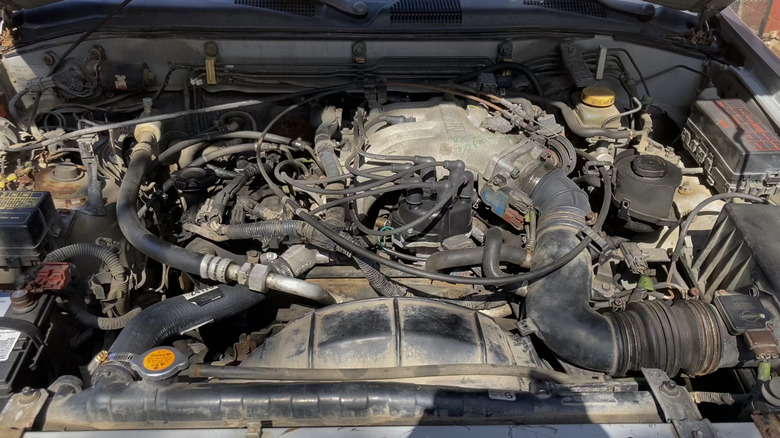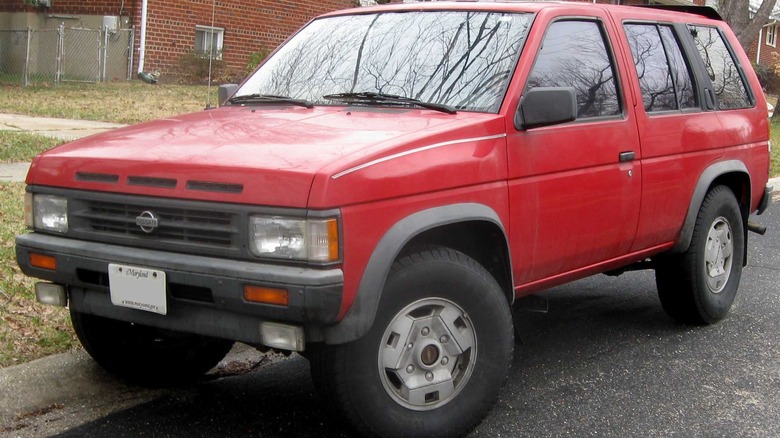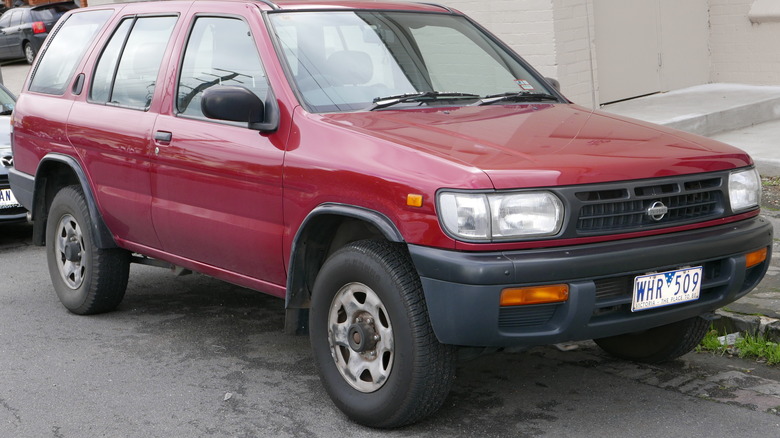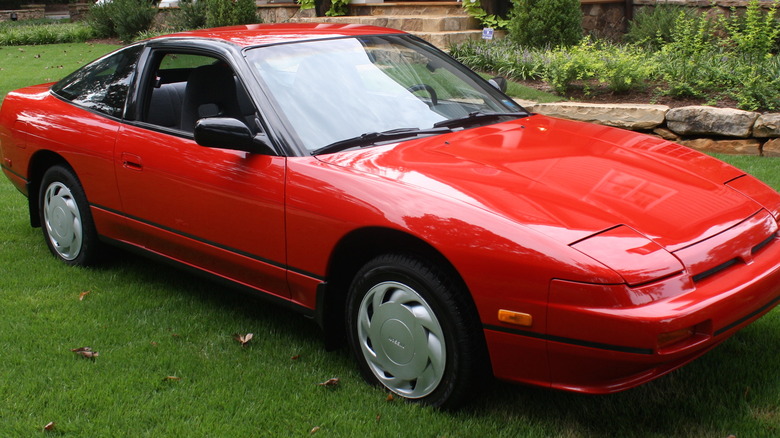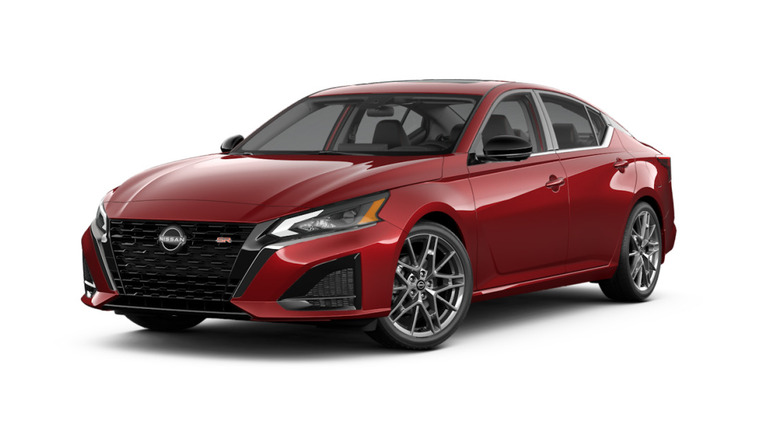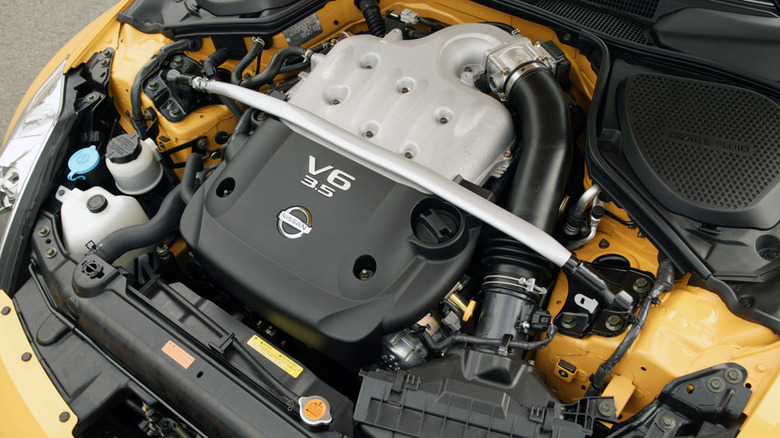5 Underrated Engines That Powered Nissan Vehicles
The global automaker, now known as Nissan, has a long history involving a few name changes. It was founded in 1914 by M. Hashimoto, who coined his initial model the "DAT," borrowing the last initials of his three investors to build the moniker. A smaller model came in 1931, which Hashimoto first called "Datson," or son of Dat. Because 'son' is the Japanese word for loss, he later changed the "O" to a "U" to give the brand a more positive association. A merger with a company called Nihan Sangyou, which used the stock ticker symbol NISSAN, birthed the name by which the company would be known globally for decades. The new parent company continued to badge its vehicles as Datsuns, using that label when it brought its automaking enterprise to the United States in 1958.
The company was more familiar to global customers, and in 1984, it went through a costly rebranding in the U.S. to unify all of its marketplaces under the Nissan brand. In its history, Nissan has produced some highly celebrated models, including the long-lived 'everyman's supercar,' the Skyline GT-R. SlashGear has already highlighted five of the most impressive engines used to power that motorsports legend, but the Skyline isn't the only powerful and dependable Nissan to hit the streets; it's simply the most celebrated. Here are five less-heralded Nissan engines that went under the hoods of some of its best models.
3.0-liter V6
Nissan introduced the Pathfinder as a two-door SUV in 1986, adding rear doors in 1990. It initially came with either a 2.4-liter four-cylinder making 106 horsepower or a 3.0-liter V6 that boosted that output to 145 horses, which was still barely adequate for a vehicle weighing more than 3,500 pounds. The 3.0's output grew to 153 horsepower as the model aged towards its next update after the 1995 model year, by which point the Pathfinder tipped the scales at over 2 tons. The 3.0 was never a performance juggernaut, but Pathfinders and Hardbody trucks that got the 3.0-liter V6 are more likely to crumble into piles of rust than develop catastrophic engine issues.
According to Fastest Laps, the 3.0-liter V6 took nearly 19 seconds to get the Hardbody a quarter mile from a standstill, and at the end of the dragstrip, it would only have the pickup going 72 mph. This particular V6 has been supplanted by larger and far more powerful engines in Nissan's trucks and SUVs. However, you'll still see plenty of 3.0-powered Nissans on the road three decades after they left the factory, piloted by loyal Pathfinder and Hardbody pickup owners who swear that their bulletproof engines only need oil changes and a timing belt replacement or two.
[Featured image by IFCAR via Wikimedia Commons|Cropped and scaled|Public Domain]
3.3-liter V6
When Nissan updated the Pathfinder for the 1996 model year, it replaced the 3.0-liter V6 with an equally dependable and durable 3.3-liter six-cylinder; the additional 300 cubic centimeters increased output to 168 horsepower. The new engine also found its way into Frontier pickup trucks and first-generation Xterras and was essentially just a marginally larger version of the 3.0 liter V6.
Although the 3.3 couldn't provide neck-snapping acceleration in any of the vehicles it powered, it has the same reputation for longevity as its predecessor. Provided the timing belts are changed at the recommended 105,000-mile interval, these engines routinely run well past 200,000 miles.
The spark plug for the No. 6 cylinder is difficult to access without removing the intake manifold, although it can be accomplished with extensions, wobblers, and some personal agility. Don't let that scare you away from this engine, though; just make sure if you have a shop change the plugs for you; they show you all six old ones to prove they didn't give up on the one in the back.
[Featured image by OSX via Wikimedia Commons|Cropped and scaled|Public Domain]
KA24E/DE 2.4-liter I4
Early Pathfinders weren't always equipped with the above V6 engines. When the model was introduced, the base powerplant was the KA24DE 2.4-liter I4, which was used in 1987 and 1988 before being dropped for the 3.0-liter V6. The SOHC KA24E was also used in 1989 and 1990 240 SX models. While the truck version of this engine used throttle body fuel injection, the one used in the 240 SX, Stanza, Maxima, and other cars had a multi-port injection system that increased output to 140 horsepower. In 1991, the KA24E was supplanted by the KA24DE, an upgraded version with a 16-valve dual overhead cam setup. The intake valves were enlarged, and the knock sensors and oil pickup tube were redesigned. These changes upped the new 2.4-liter engine's redline 400 rpm to 6,900 and increased output to 155 horsepower.
The KA24DE remained in the 240SX until the end of the coupe's run in 1998. The iron block and forged crankshaft and connecting rods make it a durable motor, and it was carried over to the Frontier line of pickup trucks, where it remained as the base engine through 2004. While never the most powerful engine in Nissan's lineup, the KA24DE can be boosted to beyond 300 horsepower by adding a turbocharger and upgrade to the cam.
[Featured image by The Pun Stops Here via Wikimedia Commons|Cropped and scaled|CC-By 4.0]
QR25DE 2.5-liter I4
The KA24DE was used through 2004 when Nissan upped their base I4's displacement by 100 cubic centimeters. The new engine, the QR25DE, was used across a wide swath of Nissan's line from Altima and Sentra cars to Frontier trucks and Murano, Rogue, and X-Trail SUVs and crossovers. Early versions of the QR25DE had a pre-catalytic converter in the exhaust manifold, and fragments of it could break off and get pulled into the engine, causing significant damage.
This was mostly an issue in pre-2006 Sentras and Altimas, and it could be remedied by replacing the stock manifold with an aftermarket header. This engine had a timing chain, which is traditionally more durable than a belt, but chain tensioner failure could cause slippage, leading to engine damage. These issues were not common and can be mitigated with conservative driving and timely maintenance, making the QR25DE a durable engine capable of lasting beyond 200,000 miles with the proper care. QR25DE motors were made in 2007 and later got a redesigned intake plus new pistons, connecting rods, and camshafts, and the engine was rebalanced.
Nissan still uses this engine today. The version in the 2024 Altima produces 188 horsepower, although Car and Driver's Jonathon Ramsey wrote that it "succumbs to unruly engine noise when asked to deliver more than predictable, unremarkable acceleration."
VQDE 3.5-liter V6
The VQ35DE 3.5-liter V6 is another stalwart in Nissan's engine lineup. It first appeared in 2000 and also found its way under the hood of more performance-oriented models like the 350Z, Skyline V35, and Infiniti G35. But the VQ35DE is far from being a jack-of-all-trades and master of none. As configured in the 350Z sports coupe, the 3.5-liter V6 made 287 horsepower and 274 pound-feet of torque and hurled the rounded wedge from zero to 60 mph in under six seconds. The 2-ton plus 2004 Pathfinder provided a towing capacity of 5,000 pounds and a respectable highway fuel economy of 18 mpg.
The partnership between Renault and Nissan, which grew to include Mitsubishi, also led to the 3.5-liter V6 being used in a handful of the French automaker's models, including the Satis, Espace, and Latitude. This engine went through two generational updates, and a 298-horsepower version was used in the 35th-anniversary edition of the 350Z and select Infiniti G35 V35 sedans. The VQ35DE is still used in the 2024 Murano, Maxima, and Pathfinder, although the current Frontier pickup comes with a newer, more powerful 3.8-liter V8.
